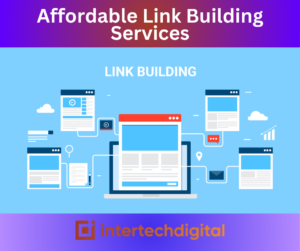At the end of 2015, the digital marketing sector underwent something similar to a seismic shift. This was the point at which Google confirmed that mobile internet searches have surpassed desktop searches for the first time. By the end of 2016, data showed that this trend had accelerated even further, with mobile devices accounting for 60% of all searches. That trend has continued, with advertisers expected to spend a record 65.8 billion dollars on mobile ads in 2019.
While marketers are well aware of the widespread use of mobile internet searches, many are unaware of Google’s commitment to this medium. As a result, they’ve pushed all of their chips to the center of the table and are betting everything on mobile. They announced in 2018 that they were rolling out mobile-first indexing and moving all web pages to that standard after a year or two of research and testing. This action indicated that mobile would play a significant role in both the current and future of search.
Marketers and web designers should be aware of this. To be sure, all of your websites must now be mobile-friendly to achieve top results. Additionally, you must verify that your SEO is appropriately optimized for mobile. This is true for all SEO efforts, but it’s also time to pay special attention to local SEO. Still don’t believe us? Consider the following figure: Within a day, 88 percent of consumers who use their mobile device to look for a local business call or visit that business.
Let’s look at how to do that now that we know how important optimizing your SEO for mobile is.

SEO should go beyond the “10 blue links” rule.
Google has moved away from the old results page, which included only the top ten most popular website links, with all of these improvements over the last couple of years. If you do a search right now, you’ll notice that other features like knowledge graphs, answer boxes, video clips, image bars, and local packs have taken up a lot of the prime first-page real estate. Marketers must now pay particular attention to these local packs while establishing a good local SEO strategy.
Many people may recall a time when a local search yielded a local-packs list of seven businesses in the area in question. Google has now lowered the number of local pack results to three. When users click on a listing, a new search window with a map of 20 local results emerges.
The way Google ranks local results in this new method is based on a variety of factors, but it emphasizes local organic searches. As a result, marketers must abandon the “10 blue links” mentality and begin optimizing for SERPs that include additional page elements and features and various ranking variables, especially when it comes to mobile. Making ensuring your local contact information is up to current and appropriately tagged in your meta descriptions is one part of this. But, of course, there are also other things to consider, such as your content and, in particular, your links.
Backlinks should be relied upon.
Backlinking is an evergreen approach that is just as important for mobile SEO as it is for desktop SEO. In terms of local SEO, the key to maintaining high ranks in the SERPs is to obtain as many links as possible from local sites related to your sector. So, in addition to respected sites in your field, pay attention to local charity and your chamber of commerce. A mention there is usually a good method to give your company some legitimacy and relevance.
Increase the quality of your material.
People don’t have as much freedom to scroll on mobile as they do on a desktop computer, for example, when reading a blog post. Plus, with a mobile device, they’re on the go, and there are numerous other environmental elements fighting for the user’s attention at any given time, in addition to your content. As a result, marketers must do more with less. Finally, your material must be effective.
Of course, in order to effectively transmit relevant information to your intended local audience, the blog post you intend to publish may need to be a several thousand words. A TL;DR summary at the top of the post and/or anchor links at the top of the post that allow the reader to jump down to the different content sections are two ways to optimize long-form content. This will contribute to the overall objective of making the navigating process as simple and quick as feasible for the user. As a result…
Streamline your navigation on your mobile device.
That means concentrating just on your site’s most significant category pages (in this case, everything related to local themes) and removing irrelevant pages. This will help you select which keywords, links, and CTAs to add on each page and which to leave out, which will benefit your SEO. Above all, make sure that all links on a landing page are contextual, so that when a person reaches there, they will find other beneficial topics to click on, which will take them through your site in a logical order. This enables for a natural ranking of pages that are appealing to search engines, resulting in high SEO.
Increase the speed of your website.
“Fast websites are profitable websites,” as the adage goes. This is undoubtedly true, and it enhances not only the customer experience but also your SEO. Extra elements, text, big photos, and other items that slow down page speed and increase load times (excess elements, text, etc.) will improve site quality, focus on your most important keywords, and result in higher search ranks.
Having problems figuring out which aspects are to fault for your website’s slowness? Investing in particular browser extensions, plug-ins, image-resizing tools, image compression tools, CSS Sprite tools (to merge many images into one), cache-control and code-minimization tools, and more can help you find the offenders quickly.
As important as these ideas are for optimizing your local SEO for mobile right now, remember to keep an eye on the future. You’ll be better prepared to remain ahead of the curve if you can see trends on the horizon. For example, is it feasible that 2019 could be the year when voice search finally succeeds? Will big data trends help marketers stay up with Google and adhere to quality guidelines? Knowing how the internet works will help you find answers to these and other important issues before it’s too late.
More Resources: THE BENEFITS OF LOCAL SEO OPTIMIZATION
More Resources: How to Make Your Google My Business Listing Completely Optimized



